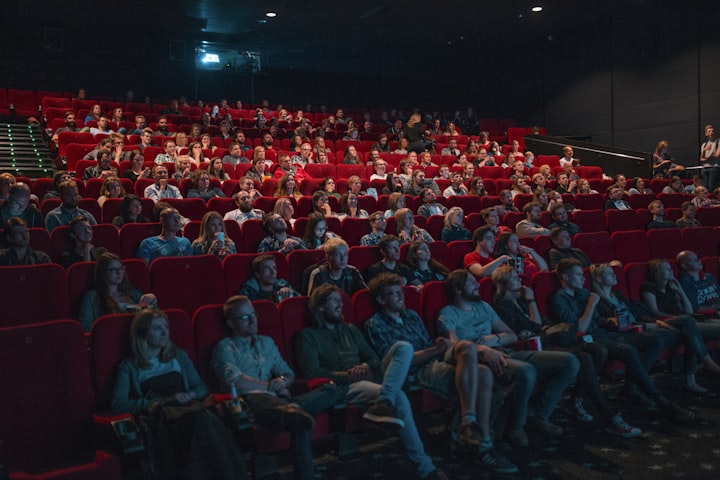The Blockbuster Films of Tomorrow: Navigating the Future of the Movie Industry
Blockbuster Films in a Changing Industry: Navigating the Future with Streaming, Diversity, and Innovation

Blockbuster films have been a staple of the movie industry for decades. These films, typically with large budgets and high-profile casts, are designed to draw in massive audiences and generate huge profits. From classic franchises like Star Wars and Indiana Jones to modern-day hits like the Marvel Cinematic Universe, blockbuster films have always been a reliable way for studios to make money and captivate audiences.
However, the movie industry is constantly evolving, and the future of blockbuster films is far from certain. In this blog post, we'll take a look at some of the key trends and challenges facing the industry, and what they might mean for the future of blockbuster films.
Trend #1: Streaming Services are Changing the Game
One of the biggest challenges facing the movie industry today is the rise of streaming services like Netflix, Amazon Prime Video, and Disney+. These services have revolutionized the way people consume entertainment, offering a vast library of movies and TV shows at a low monthly cost.
This shift has had a profound impact on the movie industry, particularly when it comes to blockbuster films. Traditionally, these films were released exclusively in theaters, where they could draw in massive crowds and generate huge box office revenues. But with streaming services becoming more popular, studios are now exploring different release strategies.
One approach is to release films simultaneously in theaters and on streaming services, as Disney did with the live-action remake of Mulan in 2020. This can help studios reach a wider audience, particularly those who may not be able to or prefer not to go to a movie theater. However, it also means potentially sacrificing some of the box office revenue that comes from exclusive theatrical releases.
Another approach is to release films exclusively on streaming services, as Warner Bros. did with its entire 2021 film slate. This strategy allows studios to bypass theaters entirely and focus on building their streaming subscriber base. However, it also means potentially sacrificing the large-scale spectacle and communal viewing experience that comes with a theatrical release.
What does this mean for the future of blockbuster films? It's likely that studios will continue to experiment with different release strategies in the coming years, as they try to balance the need for revenue with the changing habits of audiences. Blockbuster films will still be a major part of the movie industry, but their release strategies may look very different in the years to come.
Trend #2: Diverse Stories and Representation are on the Rise
Another major trend in the movie industry is the increasing emphasis on diverse stories and representation. Audiences are increasingly demanding films that reflect the world around them, featuring characters and stories that go beyond the white, male-centric narratives that have dominated blockbuster films for decades.
Studios are taking notice, with many investing in more diverse projects and hiring more diverse filmmakers and actors. This can be seen in films like Black Panther, Crazy Rich Asians, and Wonder Woman, which all feature diverse casts and tackle issues of representation in different ways.
This trend is likely to continue in the future, with audiences and critics pushing for more diverse stories and representation across all genres. This will likely impact the types of blockbuster films that studios produce, with a greater emphasis on films that center diverse characters and perspectives.
Trend #3: Technology is Driving Innovation
Finally, technology is playing an increasingly important role in the movie industry, driving innovation and changing the way films are made and experienced. From CGI and motion capture to virtual reality and 3D printing, the tools available to filmmakers are more advanced than ever before.
This has led to some truly groundbreaking films, such as Avatar and Inception, which pushed the boundaries of what was possible on the big screen. It has also allowed for the creation of new types of blockbuster films, such as those that rely heavily on special effects and world-building, like the Marvel Cinematic Universe.
As technology continues to evolve, it's likely that we'll see even more innovative and ambitious blockbuster films in the years to come. This may include the use of new technologies like augmented reality and AI to create immersive and interactive film experiences, or the development of new storytelling techniques that take advantage of emerging technologies.
Challenges Facing the Future of Blockbuster Films
While these trends offer some insight into the future of blockbuster films, there are also a number of challenges facing the industry that could impact their future success.
Challenge #1: Rising Costs
One of the biggest challenges facing blockbuster films is the rising cost of production. With many films relying heavily on CGI and other advanced technologies, budgets have ballooned in recent years, making it increasingly difficult for studios to turn a profit.
This has led to a number of high-profile failures, such as the 2019 film adaptation of Cats, which had a reported budget of $95 million but only grossed $73 million at the box office. As production costs continue to rise, it may become more difficult for studios to justify the expense of producing blockbuster films, leading to a potential decline in their production.
Challenge #2: Franchise Fatigue
Another challenge facing blockbuster films is the risk of franchise fatigue. With many franchises stretching out over multiple films and spin-offs, audiences may become tired of the same characters and stories, leading to declining interest and ticket sales.
This has already been seen with some long-running franchises, such as the Transformers series, which saw declining box office returns with each successive film. As studios continue to rely on franchises to drive their blockbuster films, it's important that they find new and engaging ways to keep audiences invested.
Challenge #3: Changing Audience Habits
Finally, changing audience habits present a significant challenge for the future of blockbuster films. As more people turn to streaming services for their entertainment needs, it may become increasingly difficult for studios to draw in large crowds for theatrical releases.
This is particularly true for younger audiences, who are increasingly comfortable consuming content on their phones and tablets rather than going to a movie theater. To succeed in the future, studios will need to find ways to engage these audiences and provide them with experiences that can't be replicated on a small screen.
Conclusion
The future of blockbuster films is uncertain, but one thing is clear: the industry is changing rapidly. Streaming services, diverse stories, and advanced technologies are all driving innovation and creating new opportunities for filmmakers and audiences alike.
However, there are also significant challenges facing the industry, from rising costs to changing audience habits. To succeed in the future, studios will need to be adaptable and innovative, finding new ways to engage audiences and create blockbuster films that resonate with viewers.
Despite these challenges, the future of blockbuster films is bright. As long as there are audiences hungry for spectacle and adventure, there will be filmmakers willing to take risks and push the boundaries of what is possible on the big screen. And with new technologies and storytelling techniques emerging all the time, the future of blockbuster films is sure to be an exciting one.
About the Creator
Lawrence Lease
Alaska born and bred, Washington DC is my home. I'm also a freelance writer. Love politics and history.






Comments
There are no comments for this story
Be the first to respond and start the conversation.